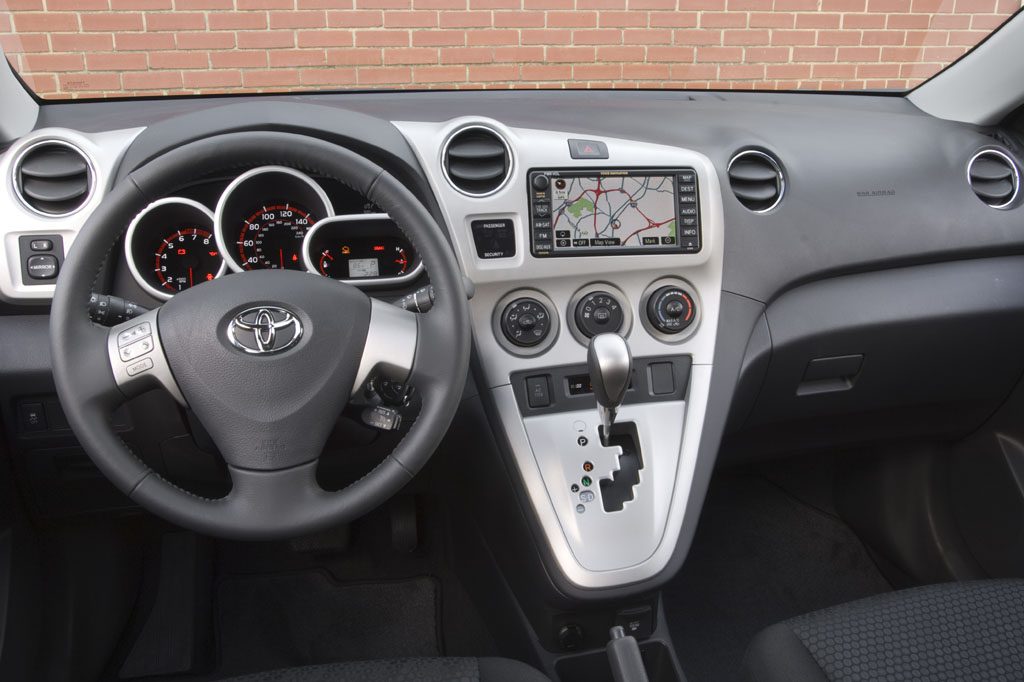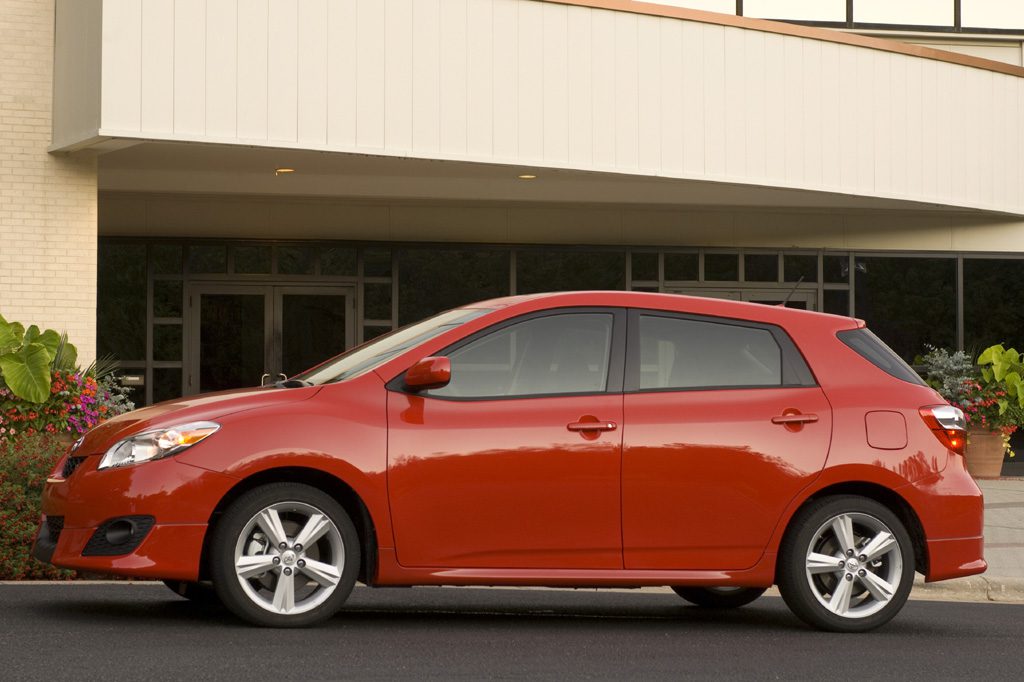| Compact car; Built in Canada |
|
|
| Good condition price range: $5,000 – $18,000* |

2009 Toyota Matrix Front

2009 Toyota Matrix Rear

2009 Toyota Matrix Interior

2009 Toyota Matrix Profile
| Pros: |
|
| Cons: |
|
Available all-wheel drive and sporty S and XRS models give Matrix a dimension absent from rivals such as the Mazda 3 and Nissan Versa. Young buyers who are Matrix’s target audience might consider the odd interior shapes hip and the low-budget cabin decor a non-issue. They’re also apt to find this small wagon easy to drive and roomy enough for friends and belongings. Best value is the front-drive S model, for its blend of comfort and power. Still, more refined compacts and hatchbacks can be found out there for a comparable price.
Overview
Styling was only mildly altered and dimensions did not change when Toyota redesigned its Matrix for 2009, but the compact wagon gained power. Like the previous (2003-2008) generation Matrix, this was essentially a tall-body wagon version of Toyota’s Corolla compact sedan, which also was redesigned for 2009. As before, too, Matrix shared its basic design with the Pontiac Vibe. Three Matrix models were available, each with a four-cylinder engine. The Base model had a 132-horsepower 1.8-liter four-cylinder. S and sporty XRS models held a 2.4-liter engine that produced 158 horsepower. All models came with standard front-wheel drive; the S was available with all-wheel drive as an alternative. The AWD Matrix S came only with a four-speed automatic transmission. Others could have either five-speed manual shift or automatic: four-speed for the smaller engine, and either four- or five-speed for the 2.4-liter. All-wheel-drive S and XRS models had an independent rear suspension. The XRS also had 18-inch wheels versus the others’ 16-inchers, plus different suspension tuning and exterior trim. Standard safety features on all models included antilock brakes, curtain side airbags, and front side airbags. Traction control and an antiskid system were standard only on the XRS, but optional for other models. All had a tilt/telescopic steering column and split-folding rear seatbacks. A navigation system was optional. Matrix rivals included the Chevrolet HHR, Mazda 3, and Nissan Versa.
Yearly Updates
| 2010 Matrix More standard safety features went into 2010 models. Previously optional on all but the XRS, traction control and an antiskid system now were standard on across the board. |
| 2011 Matrix The 2011 Toyota Matrix lineup lost its sporty variant, the XRS. |
| 2012 Matrix The 2012 Toyota Matrix saw only minor changes. |
| 2013 Matrix For 2013, Matrix had a slightly revised model lineup. The new L trim level replaced the previous year’s Base. In the process, some formerly optional and unavailable equipment became standard, including a fold-flat front-passenger seat, power windows and locks, remote keyless entry, USB port, satellite radio, and Bluetooth wireless cell-phone link. Equipment for the uplevel S model was unchanged. |
